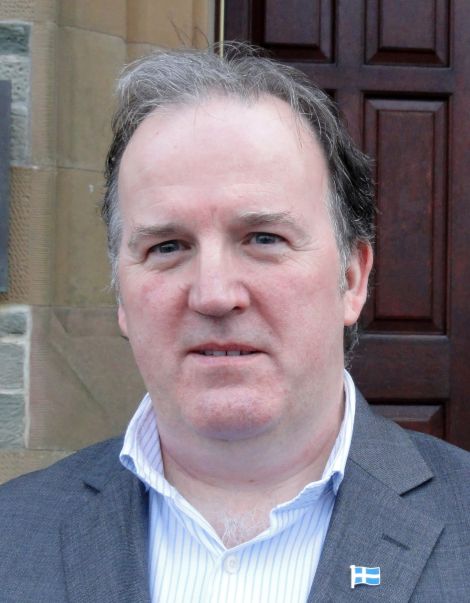News / Shetland fish farms top seal shooting list
SALMON farmers in Shetland say they hope new multimillion pound technology will reduce the number of seals being shot to somewhere close to zero.
Their comments come after a freedom of information request showed that half of the 180 seals killed by salmon farmers under licences from Marine Scotland had been shot in Shetland.
Norwegian-owned Scottish Sea Farms, which has several sites in Shetland, topped the list with 56 seals shot in 2013 and 2014, while Grieg Seafood Hjaltland shot 40 seals.
Other Shetland salmon farms on the list were Balta Island Seafare and Bound Skerries Seafood.
The Global Alliance Against Industrial Aquaculture (GAAIA), which obtained the information after an attempt to block its request by the Scottish government, is calling for a consumer boycott.
Director Don Staniford said: “Scottish salmon is dripping with the blood of dozens of seals.”
Grieg Seafood Hjaltland’s Laxfirth Voe salmon farm had the highest score for any single fish farm, with 20 seals shot between February and July 2013, and another four between May and August 2014.
Last year Grieg Seafood Hjaltland, which employs over 200 people and produces over 60 per cent of Shetland salmon, started investing around £2 million to stop grey seals breaching its anti-predator nets.
The company has installed 26 extra-strong ‘Econets’ around the cages at its three Wadbister sites, including Laxfirth, at a cost of more than £40,000 each.
It is also using cheaper anti-seal nets made out of high-density polyethylene (HDPE) – stronger than the usual nylon nets – to protect around 250 cages it has elsewhere in Shetland.
Regional director Sigurd Pettersen said the company had a “zero kill target” for seals and all of the company’s cages should be protected early next year.
“Even the stronger nets, tighter nets, look likely to have a very good effect on seal predation, so yeah, a success story from A to Z,” he said.
Become a member of Shetland News
“That may not mean we won’t have to shoot the odd rogue seal that still manages to damage our protection. We feel we’re doing what we can, and we are pretty sure we’ll never end up in a situation of having to kill 30-40 seals in a year.”
Pettersen said seal predation had previously cost between £1.5 million and £2 million a year in lost fish, but the company had now “got on top of the losses”.
He accepted moving away from shooting seals was important for the industry’s reputation, but said there were “always strange people out there” who will find something to criticise.
“We remove the seal killing problems and the anti-salmon farmers will find another point of attack, they won’t give up,” Pettersen said.
“There are people out there who want fish farming stopped, but it’s a question of reputation.
“The other thing is it was a serious financial problem for us – they killed £1.5m-£2m a year’s worth of salmon.”
Davie Sandison, of trade body Shetland Aquaculture, said that the industry was getting better at deterring seals without needing to shoot them.
“We’re investing a heck of a lot in new kit and new technology, developing new anti-predator netting – certainly into millions of pounds, and that’s just in Shetland, never mind the rest of Scotland,” he said.
“I would certainly be encouraging everybody within our industry to redouble our efforts every time to make sure we can improve on the situation, because our image is everything and clearly we’re never really ever going to be able to get away from this argument if we have to shoot a seal.
“We’ve reduced the numbers year on year and I really hope we can continue to do so.”
Jan Bevington, who rescues and looks after seals at Hillswick Wildlife Sanctuary, said she hoped the industry had realised there was no future in shooting seals.
“Fish farmers rely on the marine environment for their living so great respect needs to be shown as it does not belong to them alone,” she said.
“Although I realise it may cost a lot of money to protect their cages from the seals, the ecosystem fish farms work in needs to remain healthy if they want to have a long term future and seals are an integral part of that system.
“My only concern is that the people saying how many seals are shot actually work for the industry, so for me to have real confidence in these figures there would need to be some kind of independent monitoring.”
Become a member of Shetland News
Shetland News is asking its readers to consider paying for membership to get additional perks:
- Removal of third-party ads;
- Bookmark posts to read later;
- Exclusive curated weekly newsletter;
- Hide membership messages;
- Comments open for discussion.
If you appreciate what we do and feel strongly about impartial local journalism, then please become a member of Shetland News by either making a single payment, or setting up a monthly, quarterly or yearly subscription.































































